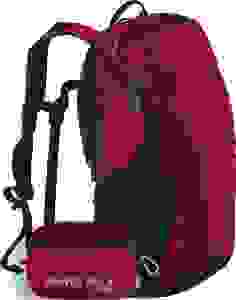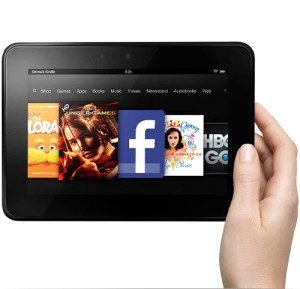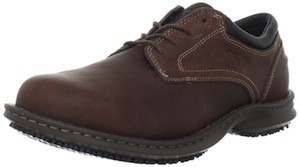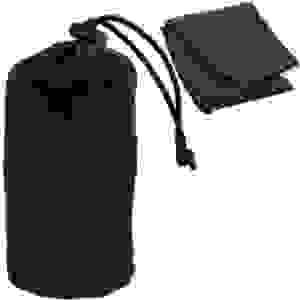Got a ridiculously ungainly monstrosity of a pack that is your arch-nemesis and allows you no end of frustration nor extra taxi fees because you can’t stand hauling it up yet another hill in the sweltering summer heat?

Welcome. we are here to help.
You can actually spot the long-term backpackers from the newbies by their pack size. First-time travelers, bless their hearts, aren’t entirely sure what to expect from wild and crazy adventures out on the road, and often bring more than they really need, just in case. It’s not such a bad idea, but more often than not, they pack extra garbage they’ll never use and end up regretting it after a week of hauling it around all the time.
It’s a lot easier than most people think to travel light, and it’s even possible to travel for years with nothing but a carry-on. All it takes is a little strategizing.
So here you’ll find a list of the top 5 bulkiest, heaviest, least necessary items that many backpackers still think they can’t do without, and the lighter, smaller, packable alternatives that’ll become your best friends at the ultralight party.
You’ll find the list formatted thusly: What to ditch What to bring instead. So, without further ado:
1) School backpack Packable backpack
This is one of my top recommendations for backpackers looking to cut down the weight of their packs. Ever see those backpackers with a backpack on their back and a “frontpack” on their front? That’s a whole lot of gear to be lugging around, and there’s an easier way to do it, not only in terms of weight, but plain and simple awkwardness.

If you want to bring along a small backpack for day trips, hikes, all-day city wanderings and other assorted jaunts, consider a packable backpack. They fold up into their own pocket, take up no more room (and weight) than a t-shirt, and expand to become fully-featured backpacks spacious enough for a sweater, jacket, guidebook, water bottle, camera, snacks, and so on. In other words, they give you all you need, but they’ll disappear into the main pack when they’re not in use.
Take a look at a list of favorites for details.
- Approximate weight savings: 1 lb (0.45 kg)
2) Laptop Tablet/Smartphone
This’ll be a controversial one, and I’ll readily admit that if you’re a digital nomad who needs a laptop to work online, well then okay. You get a pass. For everyone else, there’s an easier way.

Consider a tablet. The smaller ones especially. They’re smaller, lighter, and more rugged that your average laptop, they have optional keyboards, and the cable is smaller, too. Battery life is better, they’re often cheaper and thus less of a financial hassle to replace if lost. Plus you can play Angry Birds!
An added bonus (and it’s a big one) is that you can ditch all physical books from the pack. Tablets double as e-readers (so you can also skip the Kindle, if you haven’t figured that out yet), which means if you replace a single book with a tablet, you’ve already won. On top of weight savings, I’ve always been an advocate of e-readers for any serious book fan; you can buy whatever book you want, and you can get old books free, since the copyright has expired.
Now, admitting the potential downsides, tablets can’t do everything. They come rather close, but you might have functionality on your laptop you can’t duplicate on a tablet (multitasking and intensive copying and pasting, for example). If that’s the case, consider performing those functions at internet cafés. I won’t claim this is better; just that it’s worth considering if you only have to do “serious” work once in a while, and can get away with tablets the vast majority of the time otherwise. Think about how frequently you’d want to perform intensive tasks, and how frequently you’ll be happy having cut significant weight from the pack, and weigh the pros and cons accordingly.
And if you’re really going ultralight, bring just a smartphone, or even just an internet-capable MP3 player. If all you want to do is browse the internet and email your friends and family, the downside is rather slim. And the upside is that it’s rather slim. Zing!
- Approximate weight savings: 4 lbs (1.8 kg), depending
3) Hiking boots Casual shoes
Hiking boots, huh? Okay, I guess. Are you going hiking? No? Huh. Well that’s kinda weird, isn’t it?

I think hiking boots are one of those automatic inclusions that people sort of assume is necessary despite how easy it is to get by without them. Not only is it rare that you’ll be hiking anyway, but are you really sure you need serious hiking boots? Those monsters are designed for serious mountaineering with massive packs, and if you’re paying attention to any of the instructions here, you simply won’t have one. So why bring hiking boots?
Instead, just bring a pair of casual shoes, which you’re probably bringing anyway. A nicely built, attractive pair of leather shoes will be more than capable of handling a trail or two, and they’ll clean up quite nicely afterward. It’s actually quite easy to bring only a single pair of shoes (plus flip flops or sandals), particularly if you’re a guy, and use them for any shoe-related occasion. A nice pair of casual shoes will work just as well in the club as they do on the trail.
If you must bring separate pairs of “nice” shoes and “functional” shoes, well, I probably won’t be able to convince you otherwise. But if that’s the case, just bring sneakers/tennis shoes/trainers. As long as they don’t suck, they’ll work perfectly well on a hike, particularly if they’re waterproof.
- Approximate weight savings: 2 lbs (0.9 kg)
4) Sleeping bag Sleeping bag liner
This is another one of those automatic, just-in-case, you-never-know items that you’ll probably never use. If you plan on camping, great. If not, a sleeping bag will accomplish absolutely nothing.

While it’s true that hostels occasionally charge for sheets, this is becoming an increasingly rare occurrence, and the less often it’s an issue, the more useless a sleeping bag will become. Consider a sleeping bag liner instead. These sleeping-bag-shaped inserts are intended to protect the inside of a real bag, and can be thrown in the laundry far more easily, but they serve just as well as impromptu sheets, and also provide a little extra warmth for those chilly nights.
If you’re worried it’ll be too cold in the hostel, then you should probably find better hostels anyway. If you find yourself in a compromising position and it’s too late to change, sleep in a sweater. You’ll be okay.
- Approximate weight savings: 2 lbs (0.9 kg)
5) Fleece jacket Synthetic fill jacket
I know what you’re thinking. “What the fuck!?!?” But hear me out.

It’s not that I don’t bring a fleece jacket. I always do. But it’s the lightest and thinnest I can possibly find. When it gets even colder, I add a synthetic fill puffy jacket. These jackets are generally half the size and weight of a comparably warm fleece jacket, and the nylon shell doubles as a windbreaker. Plus, they make excellent nook-and-cranny-fillers due to their frictionless and slippery fabric. You know those “bubbles” you see in filled packs? A puffy jacket will stuff into those and you’ll barely know it’s even in your pack (in other words, never use the jacket’s included stuff sack).
So it’s not that I recommend using it as your only cold-weather clothing; but it’ll work much better than a thick fleece parka that you can only wear in freezing temperatures. Chances are you’ll bring lighter sweaters and long-sleeved shirts anyway, meaning you can replace the fleece with a puffy coat with no downside.
Take a look at this post for more info on down jackets, synthetic alternatives, and so on.
- Approximate weight savings: 1 lb (0.45 kg)
What’s the total?

If you’ve been keeping score, these weight-saving alternatives save about 10 pounds, or 4.5 kilos. Keep in mind that’s just an approximation, which depends on the specific items you’ve cut, but damn, 10 pounds. That’s a lot of extra weight to be carrying around when you’re running to catch the last train of the day in the middle of nowhere. And if you do it right, there’s generally no disadvantage to adopting these strategies. You’ll get away with it, and you’ll never go back.
Weight-saving quickie extras
So I wanted to cover the largest items, the worst offenders of the back-breaking ordeal that backpacking can often become, as cutting them out will represent the best weight savings you can find. But long-term travelers find all sorts of other fun tricks to cut down the weight, and you might be surprised at how minimal you can go with no regrets. Here are a few more highlights:
TowelUndersized travel towel (can’t believe this didn’t make the list!)PillowRolled up t-shirtMesh organizersOutfits rolled in pants
Well, that’s it for now. Got any tips? Feel free to share!





Eytan – I am a frequent business traveler that has adopted the one bag, minimalist travel approach. Co-workers are frequently amazed at my ability to go on extended trips with one carry-on. My current record is 10 days, but I am preparing for a 14 day vacation to Europe that has me looking at new approaches which is how I stumbled on your blog.
On the tech side of things, I recently ditched the laptop for a Dell Venue 8 Pro tablet. Dell sells a folio case with magnetic keyboard. The hard drive is small, but with cloud storage (I use OneDrive), this is all I need. I was not a fan of Windows 8, but with a touch screen it is really growing on me.
One tip I thought I would pass on: My understanding that electrical outlets are not nearly as plentiful in Europe as in the US. I fashioned up a minimalist “power strip” by cutting about 18″ off the 3 outlet end of a 6′ light duty extension cord and replacing the plug with a 2 prong polarized plug from Home Depot. You can add a cheap adapter for whatever country you are traveling to and as long as you are drawing less than 15 amps, this will work great. I actually made mine for US hotels that seem to be adopting the European philosophy of fewer outlets. I plug my phone, tablet or laptop and a micro router in to mine.
That sounds quite handy. I actually managed to find a universal adapter with two USB ports (this one), which allows me to charge three different things at the same time. I’m not sure what your needs are, but if I need to charge my laptop, phone, and kindle, they can all go into the same little box.
I have the same one. Gave a few away to family too. Sister found it fantastic when she & a friend were sharing rooms that often only had a single outlet.
Only issue I found is that it sits a bit loose in some of the European outlets. It never fell out just looked a bit dodgy.
I’m a fan of the windows tablets. The 8 inch ones are dirt cheap and allowed me to do everything, including photo editing, transferring, backing up while abroad. Small enough to fit into a large coat pocket.
People never realize how much weight organizers add to the total of their pack. Typically I use organizers as a way to separate wet socks etc from my clean stuff when I don’t have time to wait for stuff to dry. It added weight but it was worth it. However… i give you https://store.kifaru.net/ultralight-pullouts-p22.aspx A 13×8 one of these is less than an ounce and is “waterproof”.
I ditched my toiletry case, shaving kit bag, and added a bag for undergarments and “quick grab” items with a total of 2.8oz for all four. My personal care kit bag was lite but weighed well over 3oz so I got 4 bags for less weight than those two.
And amazing tip on the tablet. I would never have thought to put all the travel books on it. You just saved me a lot of weight & photocopying.
I’ve gone with a Kindle, which is also incredibly useful, but a “real” tablet can also combine some work/email/typing functions and so on, though for a quick trip, I think it’s best to use a phone for that sort of thing.
Hiking boots:
Even hikers don’t wear boots these days. All the serious thru-hikers are wearing lightweight trail shoes, even in quite challenging country. Outside of serious winter conditions, heavy boots should go the way of the dinosaur.
Insulated Jacket
Agreed – but why synthetic? Good quality down is lighter, more compressible and far, far longer lasting. It’s also a myth that synthetics perform better in the wet, especially when compared to the new water-repelling downs.
I like the water-resistant down, but it tends to get pricey. Plus there are some people that get a little apprehensive at the conditions the animals are kept in, so at least synthetic can provide an alternative. I have a synthetic jacket from Montbell that’s still going strong after about 8 years. I have a down jacket also, just so I’m familiar with the differences, but they both seem to work nicely.
Hey Eytan,
Thanks for sharing, this is great! I like packing light at all times :) I always bring with me ear plugs and or head phones, aside from being handy and light weight, they are very useful. Hiking and or traveling could really be tiring so we deserve a peaceful rest, it helps having an ear plugs handy at all times ;)